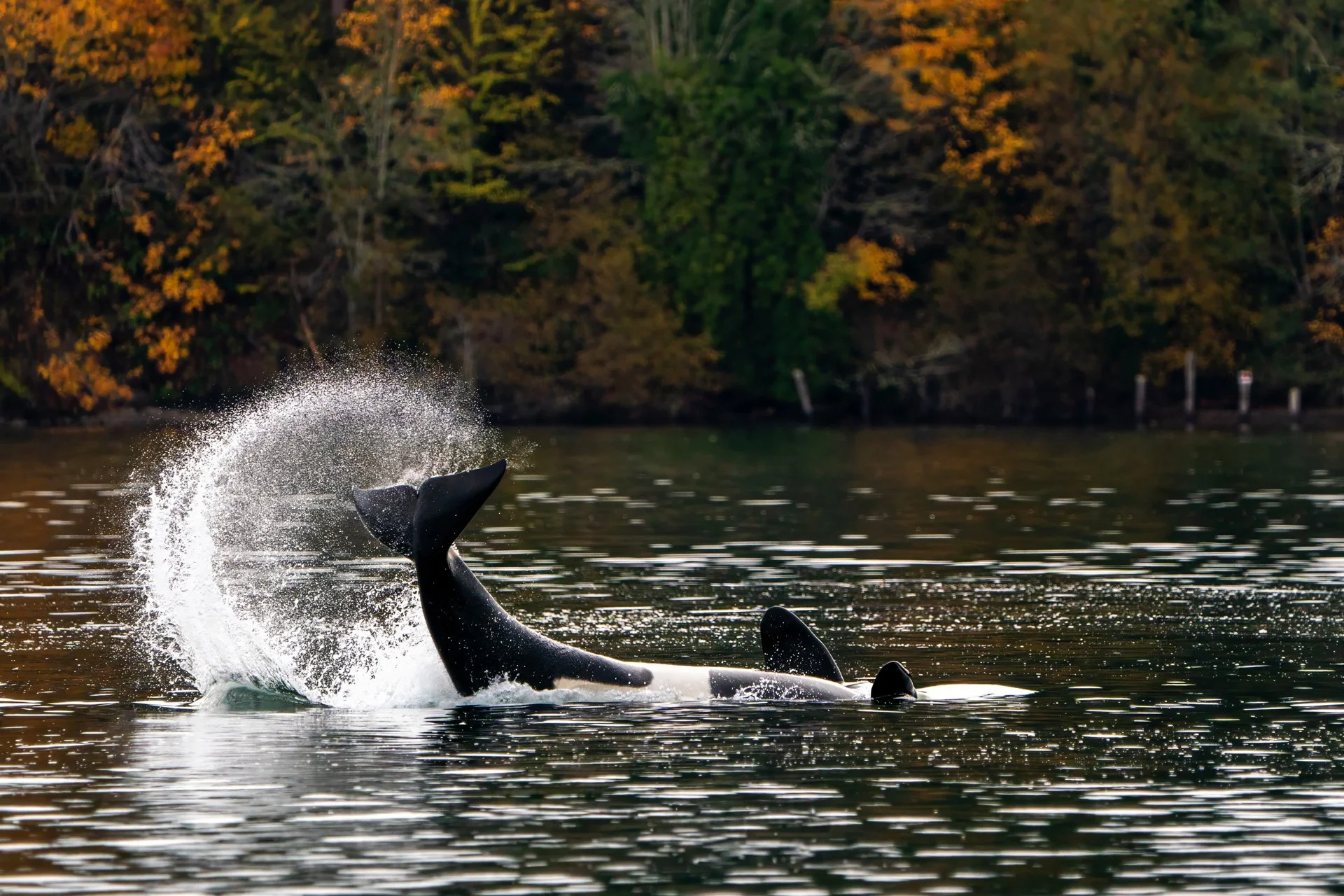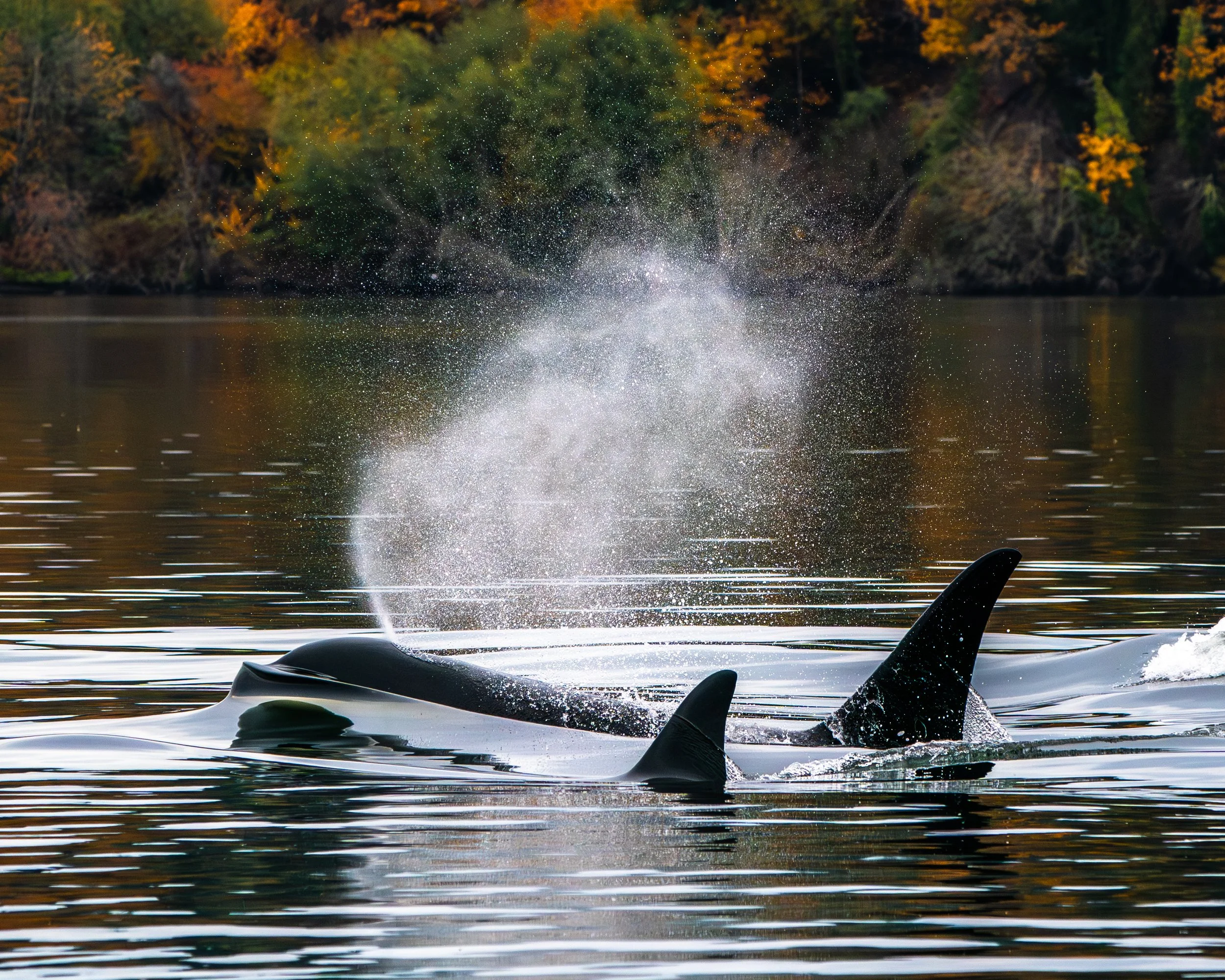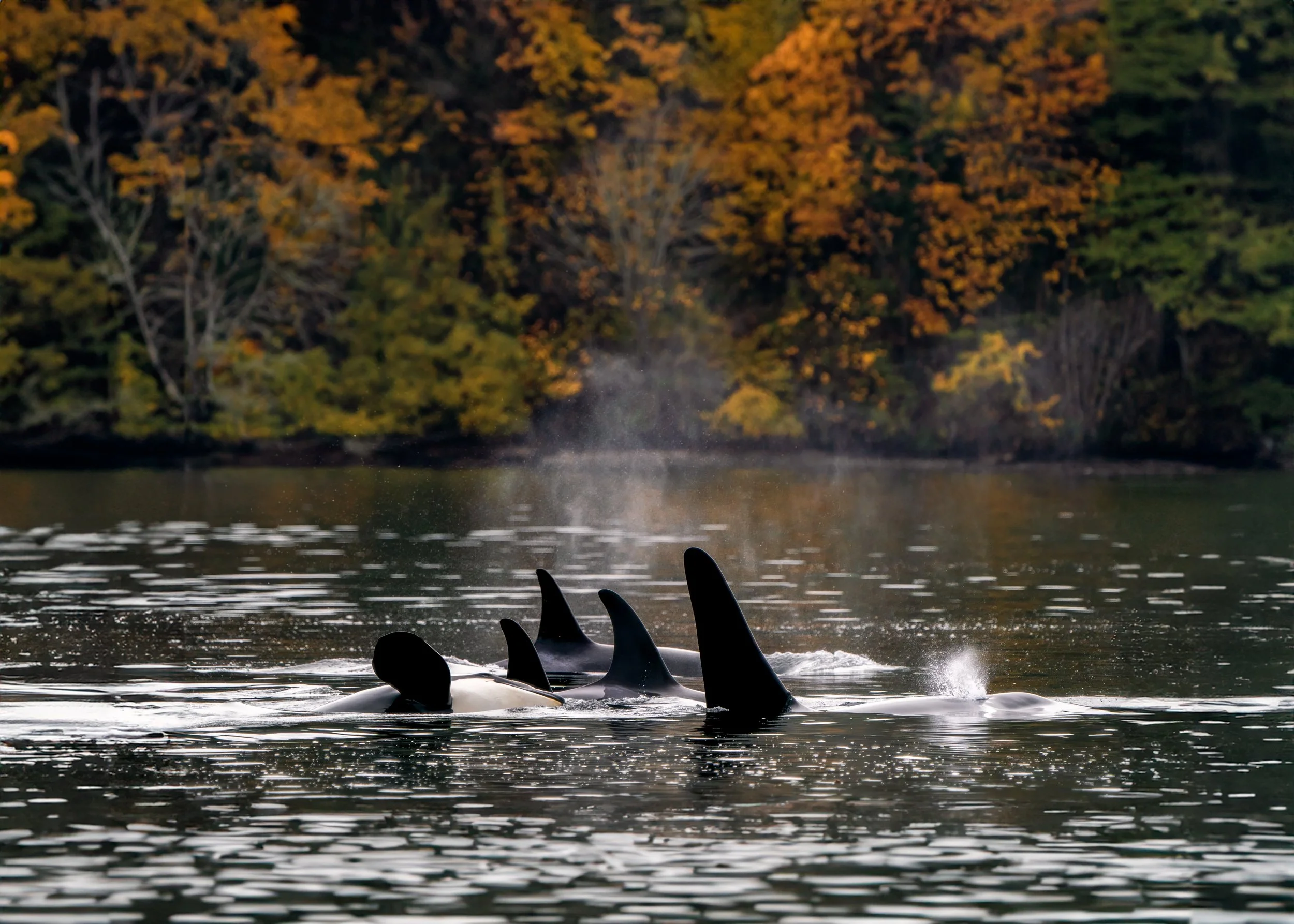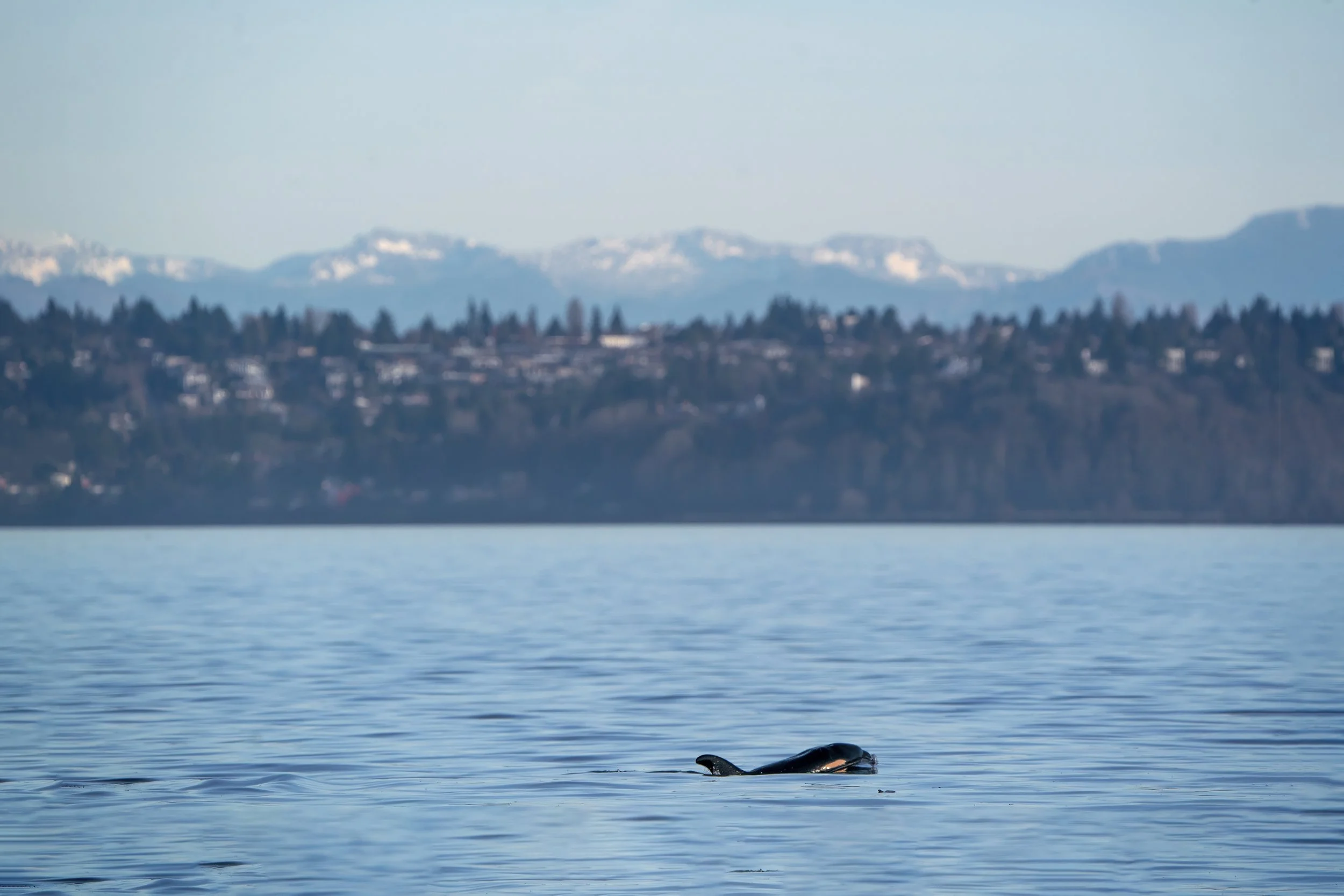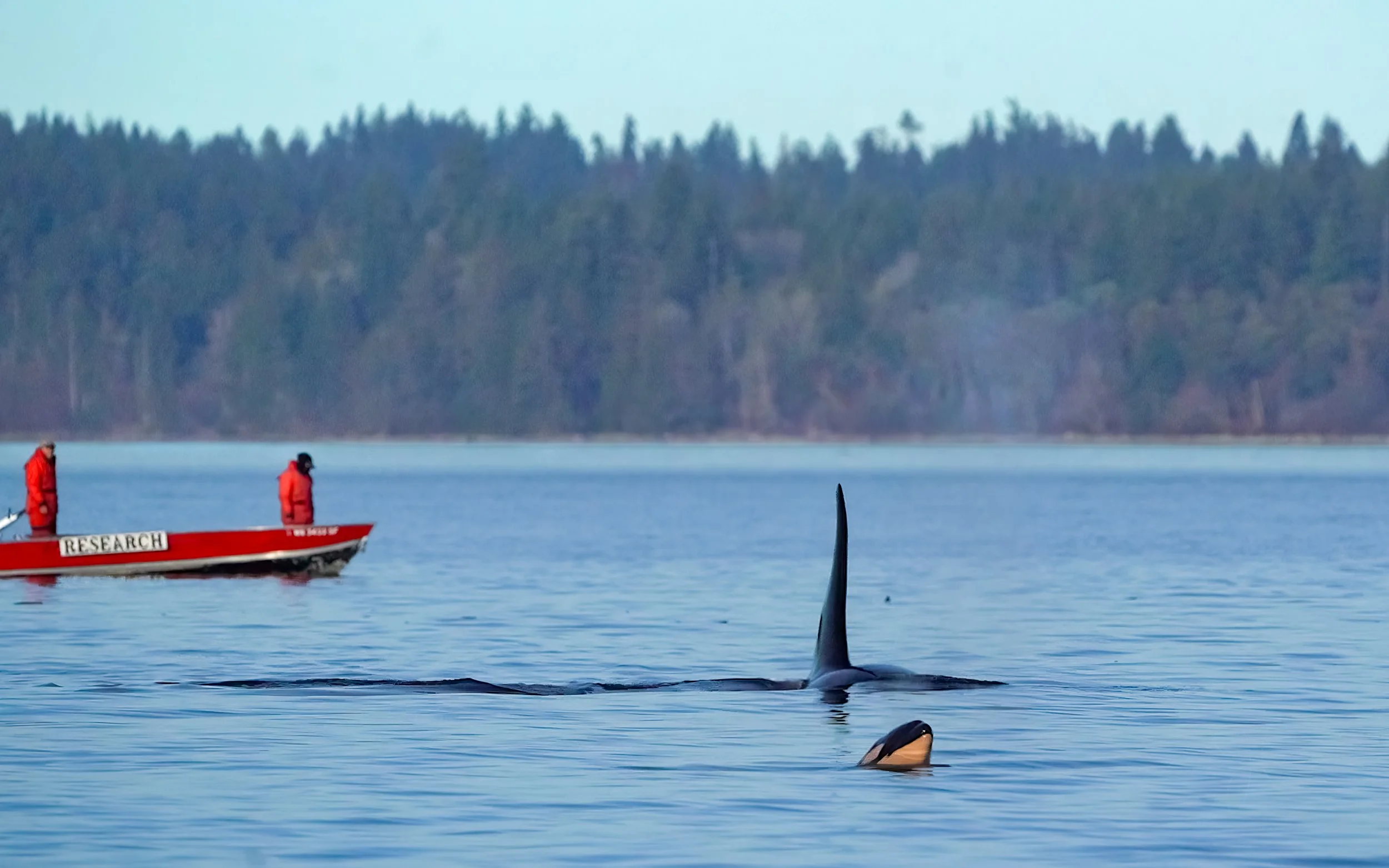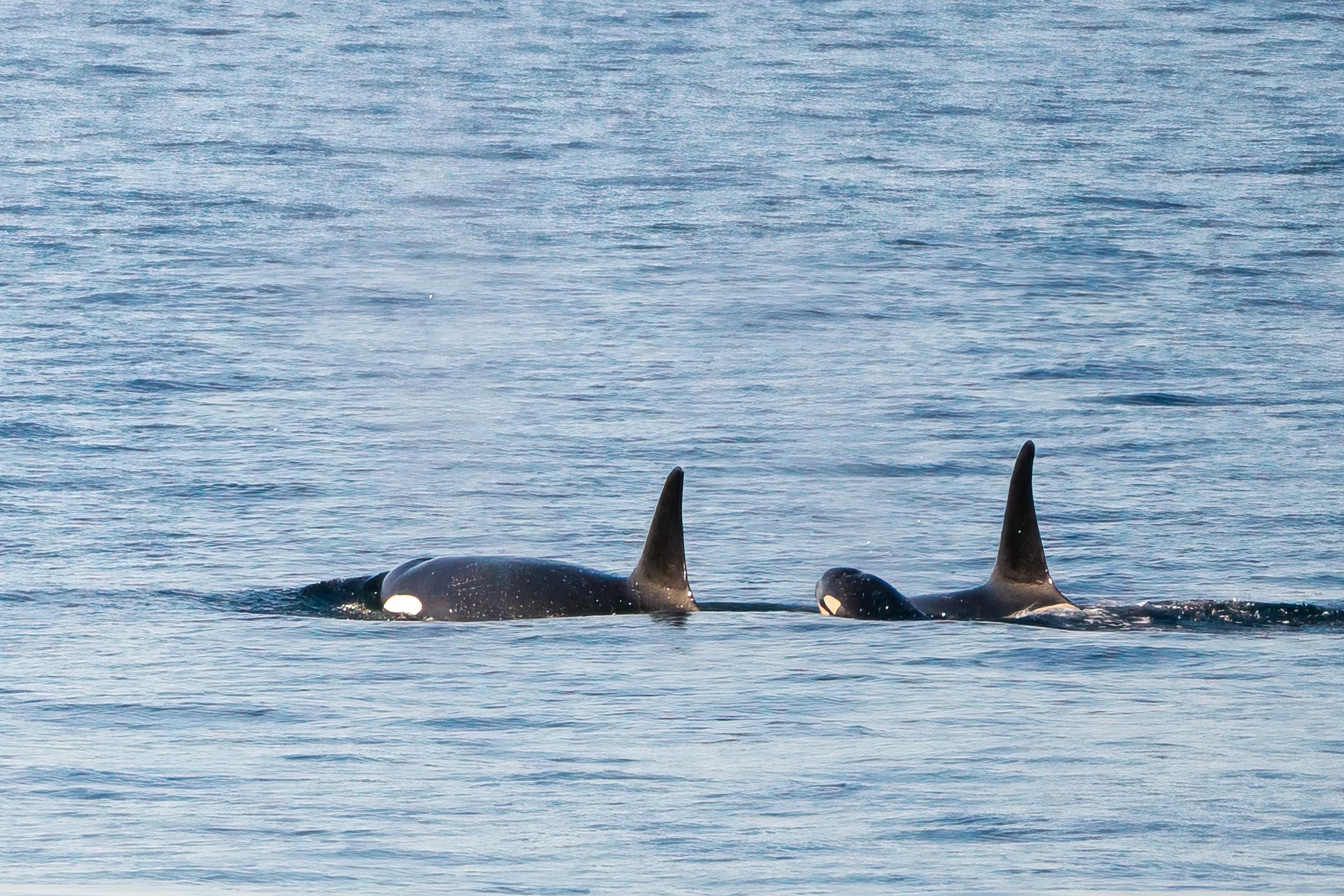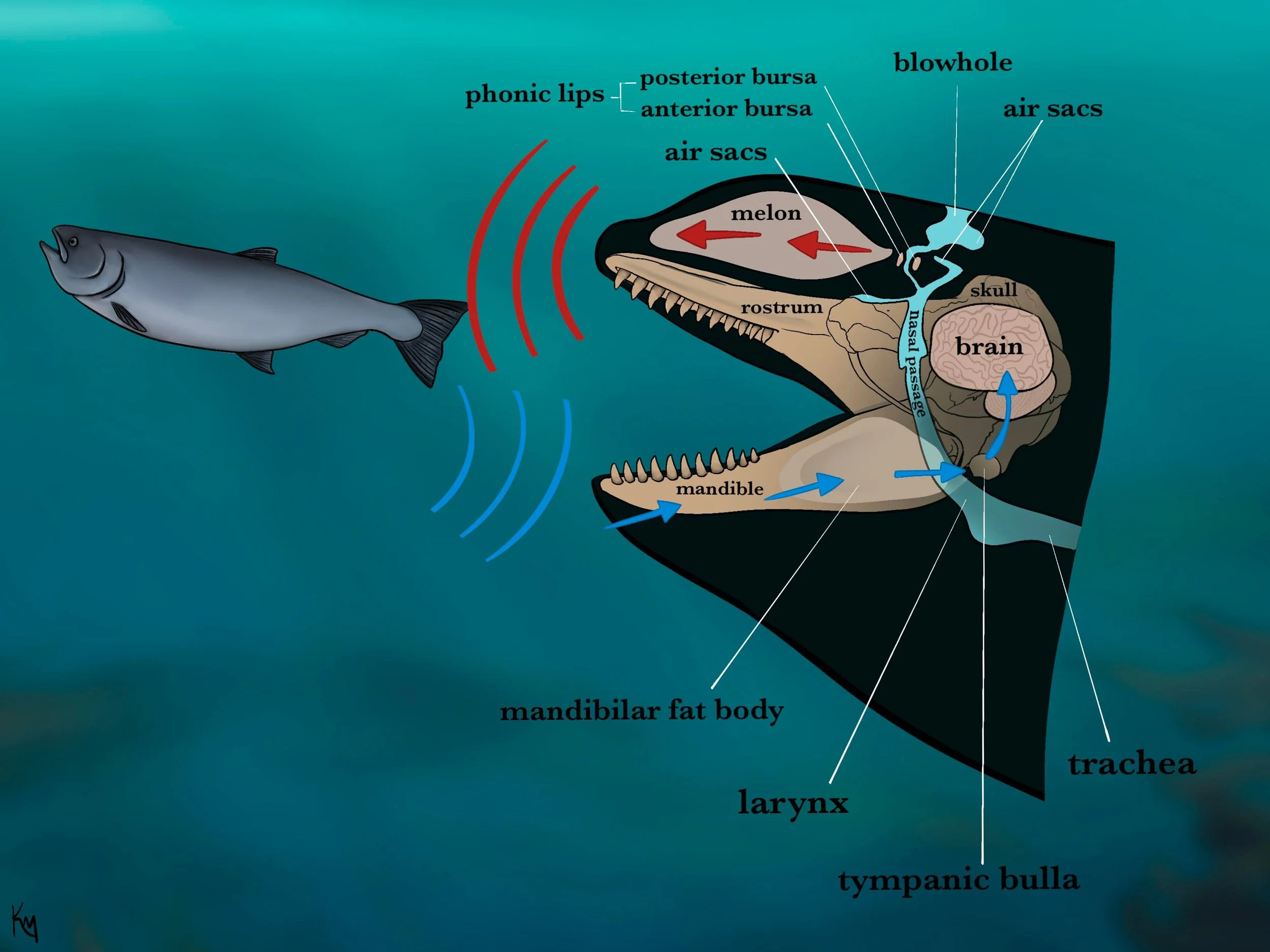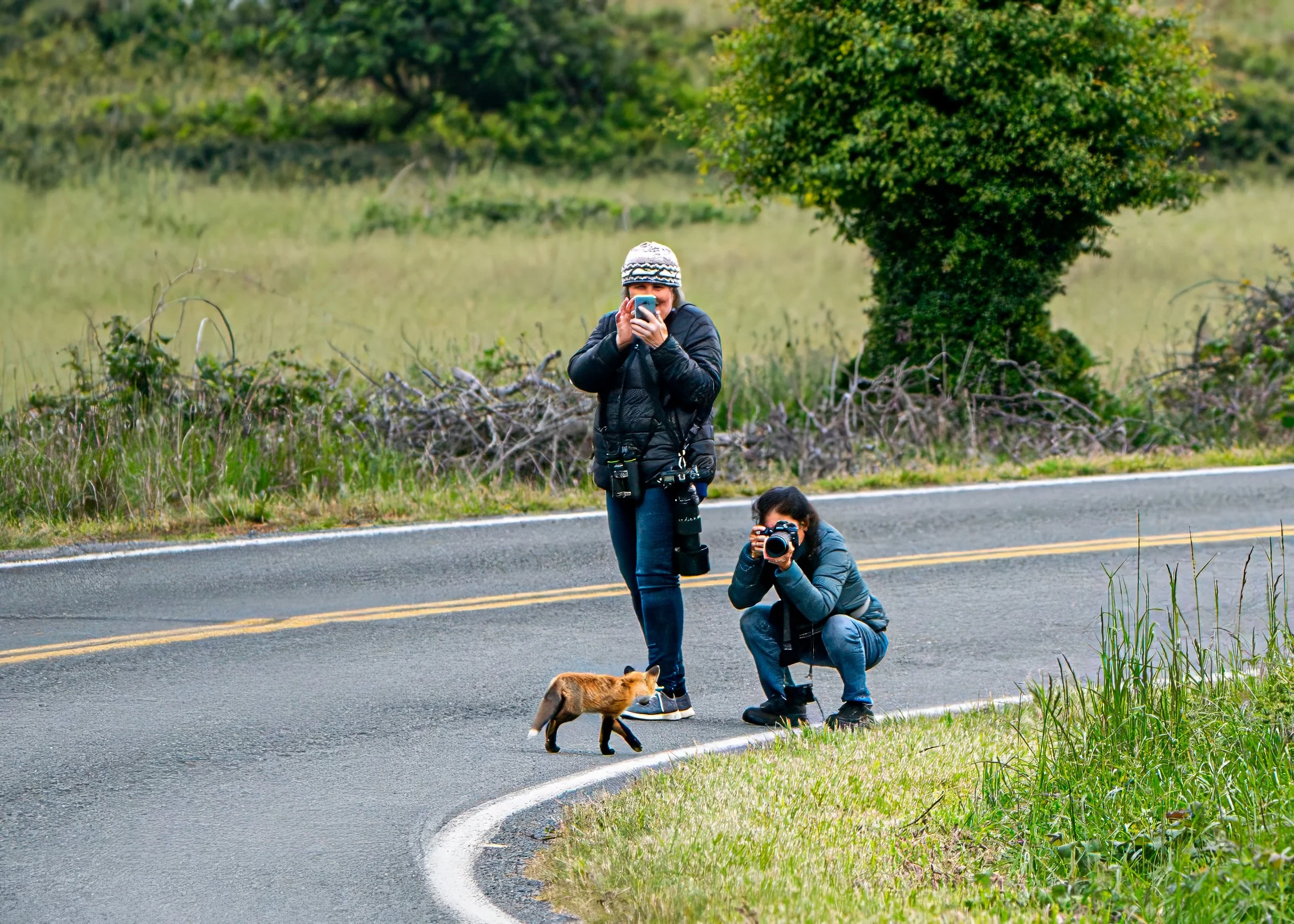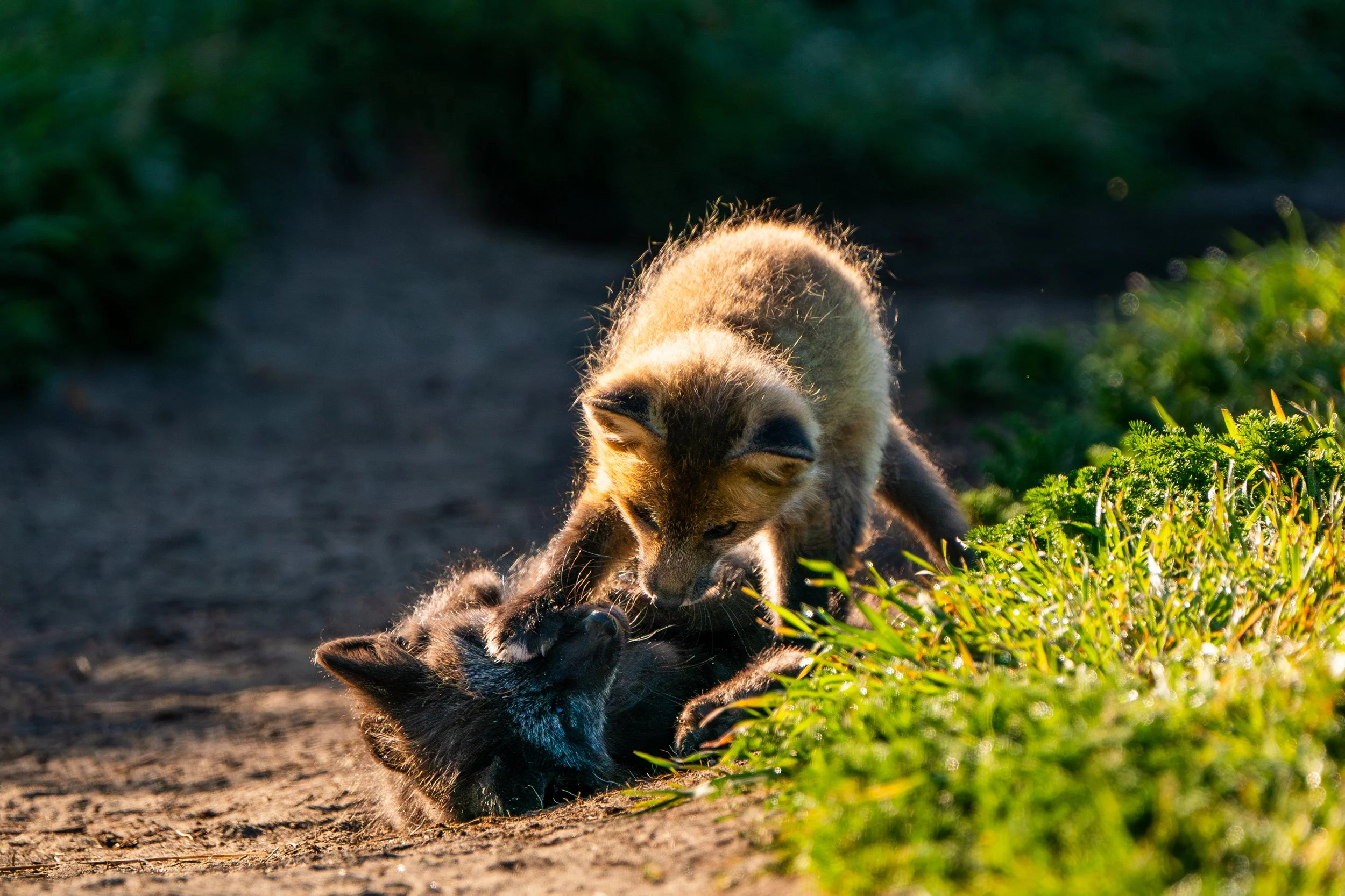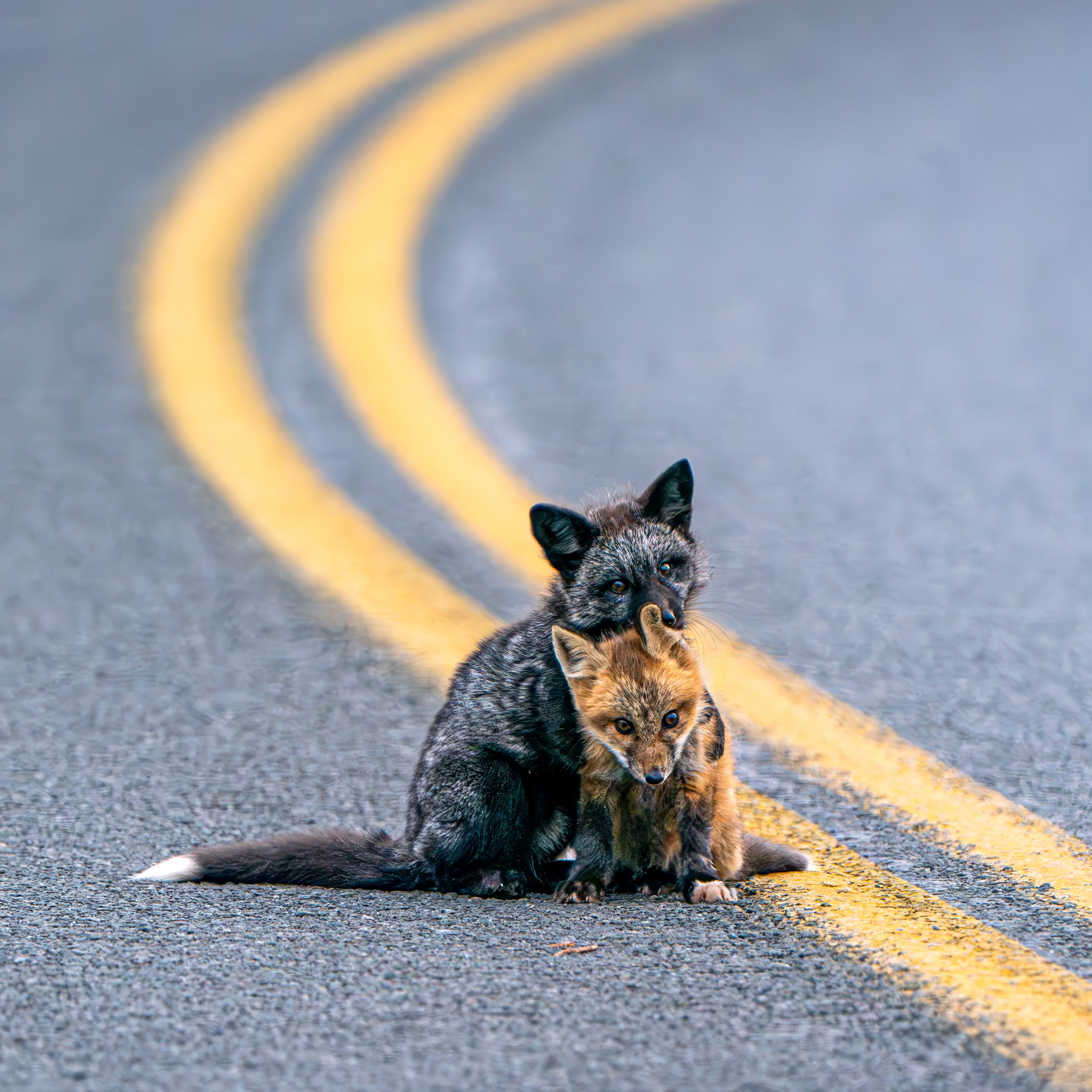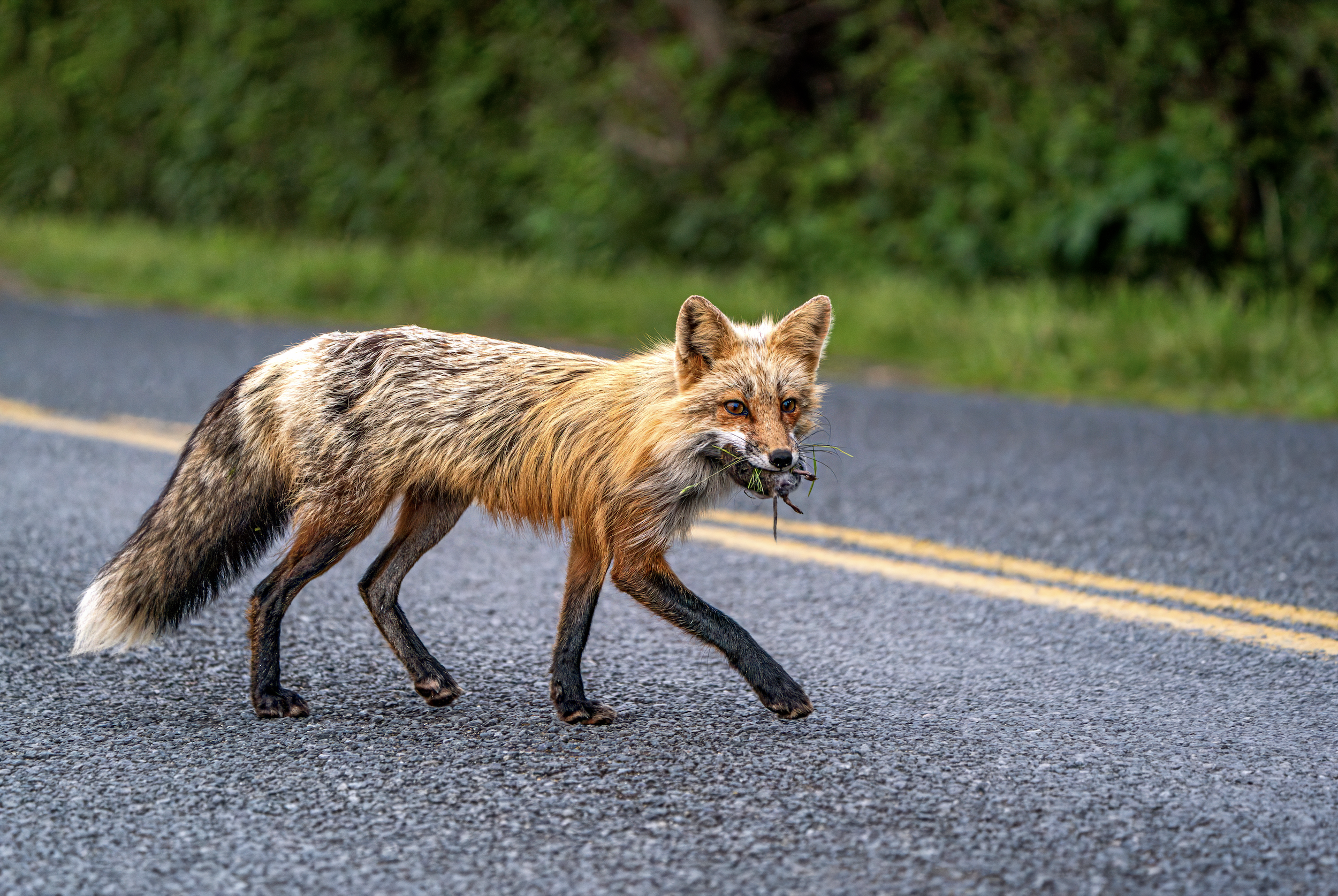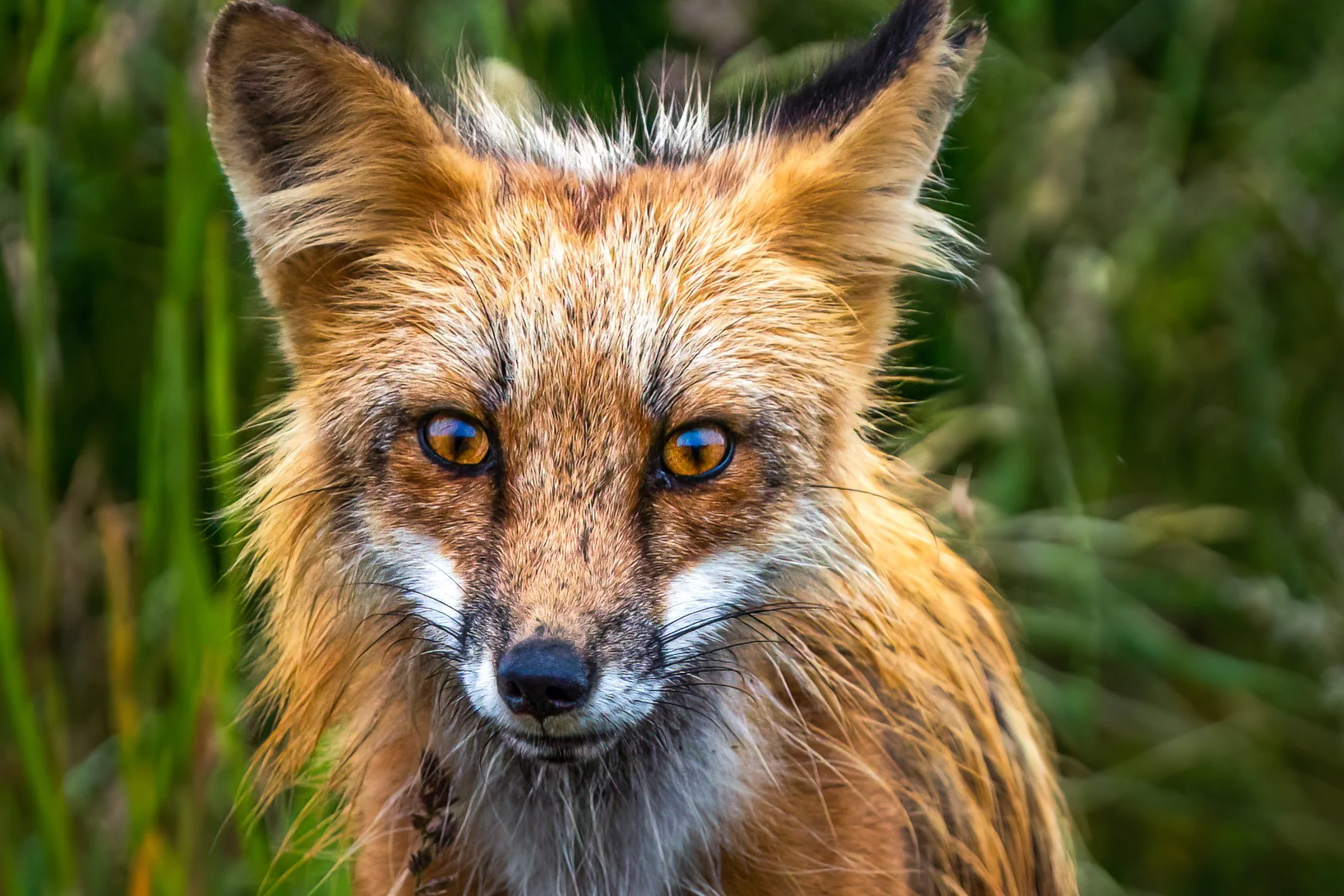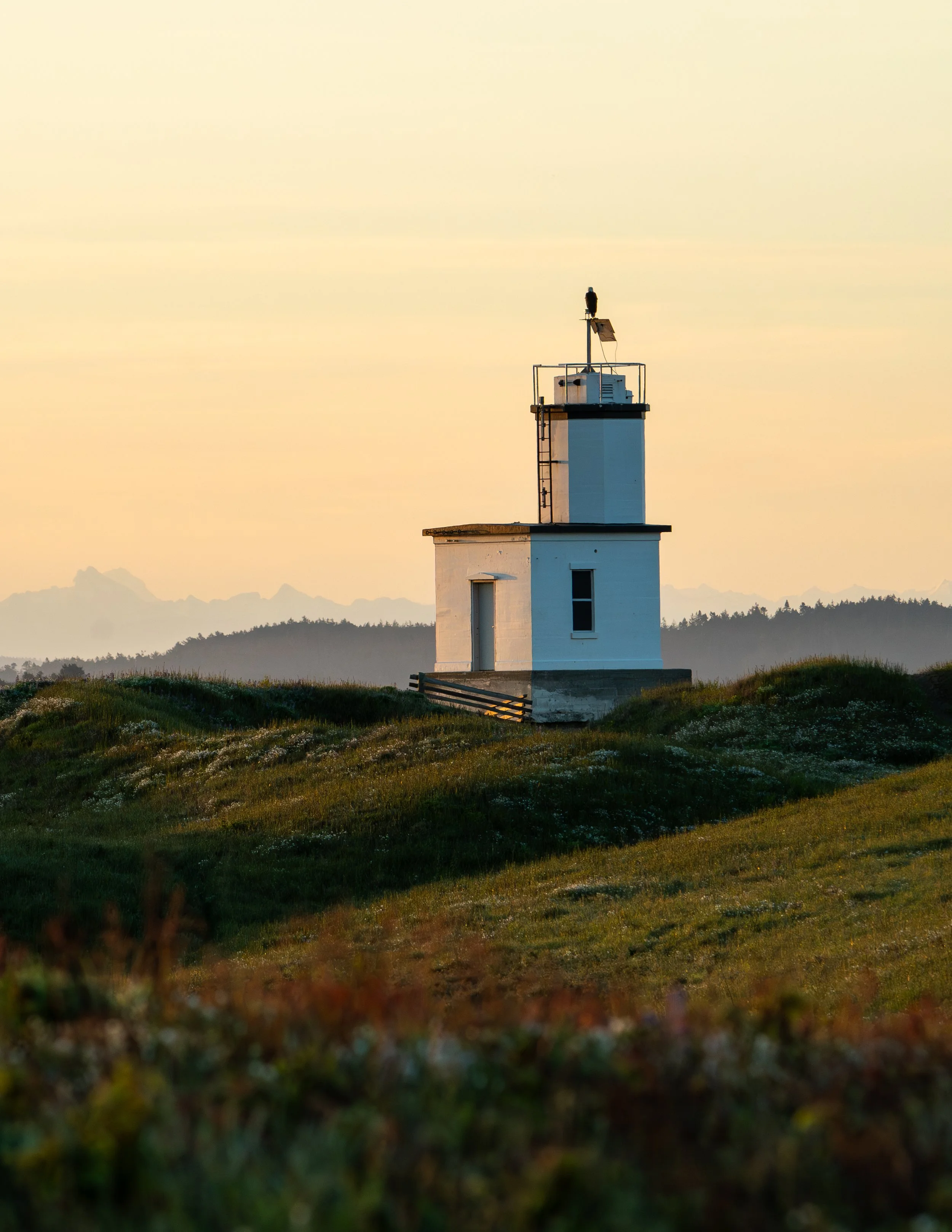Beauty and Beast is a series that explores the delicate dance between the wild’s radiant beauty and the beast of human influence, inviting us to confront what we risk losing—and what we still have the power to protect.
CHAPTER 2 Southern Resident Killer Whales
Widely known for their iconic role in the Free Willy movie series, the Southern Resident Killer(SRKW)’s have captivated hearts worldwide, drawing visitors every year to the San Juan Islands in hopes of catching a glimpse of these remarkable creatures. However, amid this admiration lies a somber reality— the Southern Resident Killer Whales face extinction, with only 74 individuals remaining.
Their demise is underscored by three pressing challenges. First, environmental toxicants pose a major risk, jeopardizing not only the health of the whales but also the delicate ecosystem upon which they depend. Second, the relentless barrage of vessel noise disrupts their ability to echolocate and find food. The third and most pressing concern is the alarming decline of their primary food, chinook salmon. 80% of the SRKW diet is chinook salmon and they themselves are critically endangered. Since the lower snake river dams were built between the 1960’s-70’s salmon populations have plummeted by roughly 90%.
The major problem that arises from lack of prey and decreased ability to find food, is that environmental toxicants get absorbed into their system.
Toxic pollutants such as PCBs (banned industrial chemicals), PBDEs (flame retardants), PFAS (found in non-stick cookware and waterproof materials), pesticides, herbicides, heavy metals from brake pads and tires, and oil or fuel runoff all contribute to the serious reproductive and health problems facing the endangered Southern Resident Killer Whales. The chemicals trigger a cascade of problems, disrupting birth rates, altering hormones, and leading to premature deaths in calves and reproductive individuals.
This is why it’s so important for all of us to take steps to reduce our impact. Small actions can make a big difference —
Carpool or use public transportation whenever possible to reduce vehicle-related runoff.
Maintain your car to prevent oil leaks and brake dust from entering waterways.
Avoid using harmful pesticides and herbicides in your yard and choose eco-friendly alternatives instead.
Properly dispose of chemicals and household waste so they don’t end up in storm drains.
Support green infrastructure projects like rain gardens and permeable pavements that help filter runoff before it reaches the sea.
Every choice we make on land ultimately affects the health of the ocean and the future of the Southern Resident Killer Whales depends on it.
According to studies done by the University of Washington, 69% of SRKW pregnancies end in miscarriage and half of all pregnancies were lost in later stages.
Around Christmas 2023, in the waters of the Puget Sound, Jpod welcomed a spunky new calf, J60. His birth brought a sense of hope for the survival of the Southern Residents.
Sadly, his time among us was brief, as he was declared deceased by the Center for Whale Research on January 29, 2024.
Fast forward to December 2024 when J35 Tahlequah gave birth, and the world rejoiced. Her story had touched hearts globally back in 2018, when she carried her deceased calf for 17 days in a powerful ‘tour of grief.’ Since then, she has given birth to a thriving calf (J57 Pheonix), which gave us hope that her newest baby, J61, would survive.
Tragically, that hope was also short-lived. On January 1, 2025, as the Southern Residents traveled past Vashon Island, Tahlequah was once again seen carrying the lifeless body of her calf. While the exact length of time she carried J61 lifeless body remains uncertain, we know she carried her deceased child for at least two weeks before the pod quietly left the Puget Sound and out of public view.
Almost a year later in September 2025, two new calves were born into the J16 matriline. Tragically, J36 Alki’s calf was stillborn, either dying during or shortly after birth. In a yet another heartbreaking display of grief, she was observed carrying her deceased calf for a few days. Not long after, her sister J42 Echo also gave birth.
Though her calf initially survived, when the pod returned to the lower Salish Sea just over a month later, the calf was no longer present and was confirmed deceased by the Center for Whale Research.
As of November 2025, 5 of the last 7 calves born into the Southern Resident Killer Whale Community have not survived.
Pictured here is the mouth of the Puyallup River, where freshwater meets the saltwater of the Puget Sound. This estuarine zone is a vital transition habitat for salmon, providing shelter and food as they prepare to migrate upstream. As you can see, this once crucial habitat has been transformed into a busy port, its waters burdened with pollution and toxic runoff. What was once a thriving estuary is now a challenged ecosystem, forcing the salmon to adapt to harsher conditions.
SRKW depend entirely on sound to find food. They utilize sonar to echolocate, emitting sound waves that are absorbed into their jaws. This provides them with precise information about the location, size, and species of their prey.
However, in an expanding economy marked by an increasing number of container ships traversing the Southern Resident Killer Whales' habitat, the task of finding food has become significantly more challenging.
For recreational boaters and kayakers, adhering to whale-wise laws is crucial. At this critical moment in the survival of the species, it is ethically imperative that the Southern Residents be observed solely trom land. However, if you do find yourself on the water with the SRKW (or transients), please abide by the guidelines
Graphic by Kat Martin
CHAPTER 1 FOX KITS
Springtime brings new life across the globe, and on the San Juan Islands, it’s the season for fox kits. These tiny bundles of fur emerge from their dens, drawing photographers and wildlife enthusiasts far and wide— eager to capture a glimpse of their first wobbly steps. While the sight is undeniably captivating, it’s vital to remember the principles of responsible wildlife viewing: keep a respectful distance, never feed the animals, clean up after yourself, and keep noise to a minimum. By doing so, we ensure these young foxes can grow and explore safely in their natural world.

Spring of 2024, a litter of kits was born along a trail frequented by hikers and photographers. Unfortunately, some uneducated—or simply unethical—photographers resorted to baiting the foxes with food, making noises, or offering toys to get the perfect shot. These disturbances forced the mother fox to move her den, placing it alarmingly close to a busy road—a road where, the previous year, nearly every kit born nearby had met a tragic end. This year (2025), she nested in almost the same location, and heartbreakingly, she was struck and killed by a car, leaving her litter of orphaned kits to struggle for survival on their own.
Here a woman is seen standing feet from the foxes den, focused on capturing content. Meanwhile, the mother is driven to nurse her kits in the middle of the road. Her mate stands nearby on the trail, watching as the scene unfolds.
Feeding wild animals like foxes may seem like a kind gesture, but it can have unintended and detrimental consequences. When humans provide food to foxes, they inadvertently train them to associate people with food and cars/roads with people. This can lead to dangerous situations, where foxes become overly comfortable in urban environments and are at higher risk of being hit by cars.
Despite good intentions, feeding wild animals is ultimately a selfish act that can endanger their lives. Foxes are wild animals with natural hunting instincts, and intervening in this balance by providing them with easy food disrupts the delicate ecosystem. As a result, their hunting behavior diminishes, leading to overpopulation of their prey and a lack of essential nutrients needed to thrive and live a healthy life.
To ensure the health and survival of foxes (and other wildlife), it’s crucial to refrain from feeding them and allow them to rely on their natural instincts to flourish.


